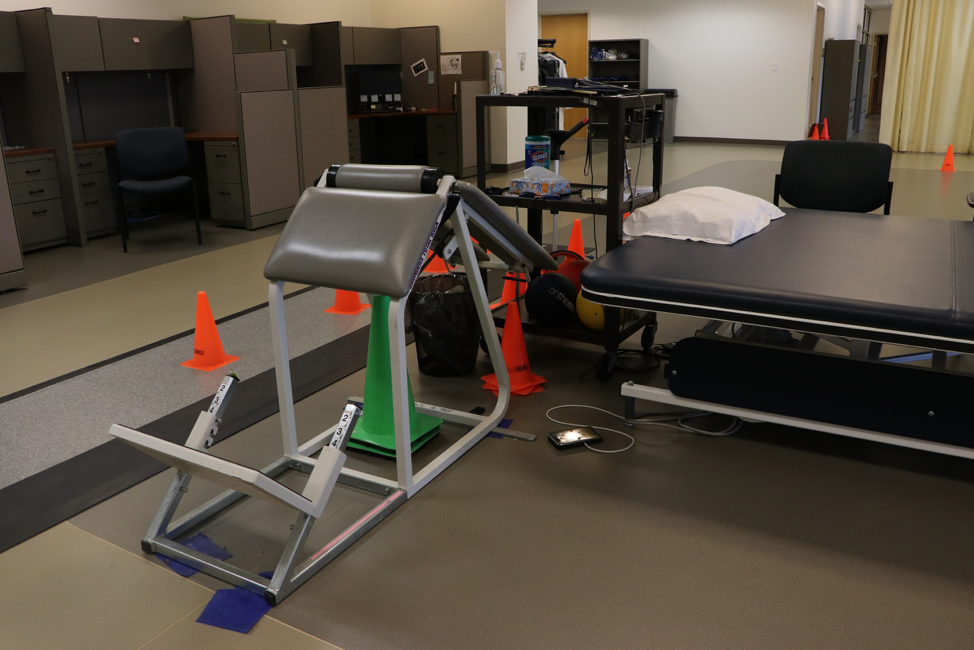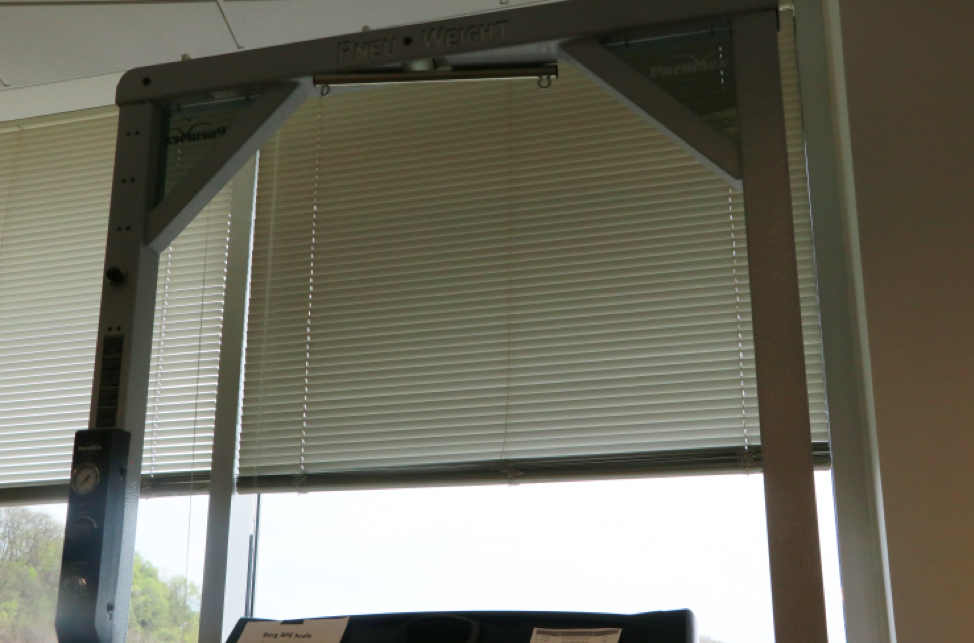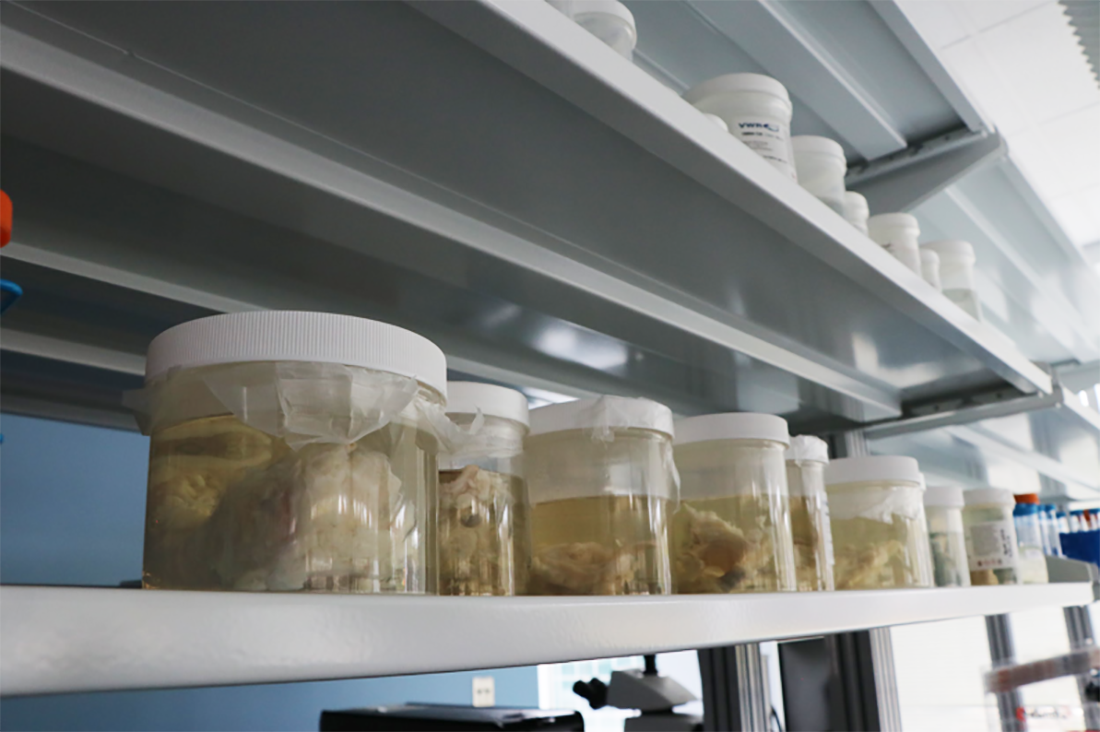By Colleen Zewe
Medill Reports
ACL injury treatment options and cycling as a physical therapy for older adults with Parkinson’s are just a few of the groundbreaking areas of testing for all ages at the University of Pittsburgh’s Physical Therapy and Translational Research Center.
My embedded reporting project is at the University of Pittsburgh School of Health and Rehabilitation Sciences Neuromuscular Research Lab has opened the doors to many other departments, labs and research areas pursuing pioneering work. This week, I toured PT-CTRC and the Laryngeal Biology Laboratory, part of the Department of Communication Science and Disorders.

Dr. Sara Piva, the lab’s co-director, gave me a tour. She pointed out features such as bariatric beds to accommodate patients of all sizes and acoustic curtains to aid with blind studies. In blind studies, patients and testers cannot see what type of treatment other patients are receiving. Piva said that, in some studies comparing different therapy options, patients might become envious or upset if they see a different therapy, think it looks “better” and then become discouraged. This could influence their expectations for improvement and how much effort they put into their therapy. Meanwhile, testers may see a different treatment being used that they think is more or less effective, causing them to subconsciously motivate their own patients differently. These curtains prevent study participants from seeing or hearing about other patients’ treatments.
Piva said blind studies are a lot of work, but the clinic has less than a 10 percent break of blinding process, which is considered an “outstanding” percentage in physical therapy research.

Piva also showed me a metal frame therapists can place around treadmills for patients who cannot bear weight. The patient can be strapped into a harness similar to those used in rock climbing. With that support, they can walk on a treadmill, allowing them to strengthen and rehabilitate their legs.

Recent studies at the PT lab include looking into the real effectiveness of lumbar spinal stenosis (LSS) surgery. Piva said that LSS surgeries are incredibly common and utilize a lot of Medicare money. However, she said she worries doctors are too quick to use the surgery as a solution for LSS, a condition where the spinal canal narrows and compresses the nerves that lead from the lower back into the legs. She said that, for some, the surgery does not even solve the issue. In a recent study, she compared the effectiveness of the surgery versus manual therapy in treating LSS. She said she thinks the surgery is only needed in about half of LSS patients.
Right now, Piva is researching the effectiveness of hip therapy for lower back pain. She explained that many people with chronic lower back pain also complain about slight hip pain, but physical therapists often only treat the lower back pain because that is the primary concern. However, Piva wants to see if adding in hip therapy to lower back therapy can help resolve both issues more effectively. She is randomizing patients for either lower back pain therapy, or lower back and hip pain therapy for a research program funded by the National Institutes of Health.
On the Communication Science and Disorders (CSD) side, doctoral student Azure Wilson led me through the Laryngeal Biology Lab. She said she chose to do her doctoral research at this lab because there are few biology-focused CSD labs, as many CSD labs focus on clinical therapy.

This lab focuses on laryngology, or the study of the larynx. You might know the larynx as the voice box. This hollow structure connects to the windpipe. When you breathe in, air passes through the larynx while on its journey to the lungs. The larynx contains the vocal folds, also called the vocal cords. They meet together at the mid-line of the larynx. When open, they are apart, allowing air to flow through. When they are “closed,” they touch together. When you speak, they vibrate and switch between open and closed to create a buzzing sound, which is the basis for your voice.
However, tumors, injuries, infections and other problems can weaken one or both vocal folds and make it hard for them to touch together. This can cause a lot of issues with both breathing and speaking. If the vocal folds are always open, air is constantly traveling through them, making it hard to swallow. Without proper vibrations, the voice can become quiet and hoarse.

To solve this problem, the lab is equipped with a 3D printer. The printer can make a personalized implant to help the vocal folds meet at the mid-line and become closed. The implant acts as an extension so that the weaker vocal fold can reach and touch the other. Currently, implants are made out of silicone and carved to fit into the patient’s larynx. They are put in, tested and reshaped all while the patient is awake. This new 3D printing method will more efficiently create vocal folds fitted for the individual.
The School of Health and Rehabilitation Sciences encompasses a vast range of disciplines, from sports medicine to communication disorders. The school brings together prosthetics and orthotics, nutrition, occupational therapy, physician assistants, emergency medicine, audiology and counseling, rehabilitation technology and health information management programs. Though very different, all of these fields have one thing in common: they help people reach a better quality of life. While the NMRL supports people in reaching peak physical performance, other labs at the school help people rehabilitate and adjust to make the most of everyday life.


